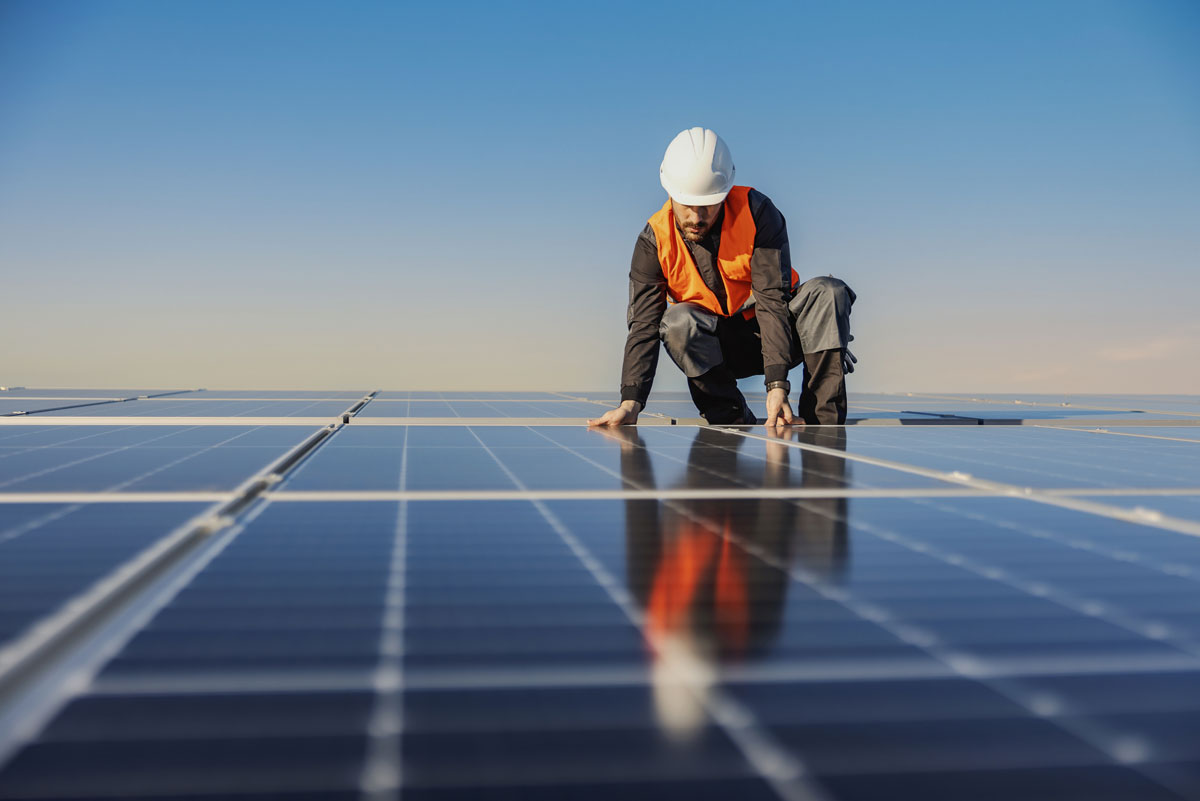Thinking of offering on-site operations and maintenance (O&M)? The reality is outsourcing solar O&M may be your best bet.
Solar developers and asset owners who outsource O&M instead of building and managing their own network often experience rapid growth while reducing common pain points. Here are some important considerations when deciding on build vs. buy.
1. Scale on demand
Signing on with a nationwide, third-party service provider – with a deep network of specialized technicians – provides dependable coverage for new territories and removes any geographic constraints around your growth.
The Omnidian service network, for example, covers over 34,000 ZIP codes. That’s 96% of ZIP codes with solar assets in the United States (including Hawaii and Puerto Rico), with redundant coverage in many areas. Coverage is defined as having a technician within two hours to any solar site.
“Quick and efficient response times from issue to resolution is the highest priority for our clients, because every minute of system downtime means lost revenue,” said Tiffanie Talley, former Commercial Service Network Manager at Omnidian. “Our service network was purpose-built to ensure our clients experience maximum system uptime and internal rate of return. We have hundreds of certified & trusted partners nationwide, who have successfully completed over 6,500 commercial tickets just in 2023 alone.”
2. Preferred pricing
This type of scale and guaranteed work for service technicians also means that solar asset owners utilizing Omnidian’s network benefit from those economies of scale.
“We remove the hassle of finding and managing qualified technicians,” said Talley. “We manage the contract negotiations, we get the best possible rates, and we are able to quickly dispatch qualified specialists.”
3. Specialized service
When building a PV service network, the importance of specialization is often underestimated.
Companies or technicians can say they provide solar service, but that’s a broad term. Do they usually provide residential solar service instead of commercial and industrial solar O&M? How about vegetation and module washing? Are they familiar with medium-voltage inverters?
A third-party provider with a deep network can more efficiently match the right technician for the task and avoid any delays in issue resolution.
“We use certified technicians for QA/QC; if a site is medium voltage, we have technicians that specialize in that as well,” Talley said. “And we have coverage across the country. So, if you think about trying to build this network in-house, going directly to providers, and having to vet them all and negotiate contracts… it’s a lot to take on, especially if you have plans of expanding into a new territory.”
A Scalable Solution for C&I Solar Owners
4. First to know
Having access to a nationwide network of service pros also means having access to a vast network of industry intelligence. Solar service technicians are the first to understand what equipment is failing in the field (and why), what supply chain issues are delaying repair times, and much more you won’t find printed in the trade press.
“There are a few things that are out of our control, like the lack of materials and extended lead times for replacement equipment, but we’re typically the first to see all of these issues because we’re linked to so many contractors and partners nationwide,” Talley said.
5. Standards of quality
Given the workforce shortage – and reports that the majority of C&I solar rooftops have safety and workmanship issues – the vetting of a PV service network is worth emphasizing.
Constantly evaluating and scoring an in-house roster of technicians, and replacing anyone that drops out or needs to be substituted, requires constant due diligence. To join the Omnidian service network, providers must start by submitting documentation such as business license, contractor’s license, insurance, and more. The process takes three to four weeks at minimum.
“Once they’re approved, we put them through training on our platform,” Talley said. “Once they are an activated partner, we then grade them after every service visit based on client feedback and on metrics like time to site and issue resolution. We have weekly check-ins with our partners to maintain open lines of communication, as well as to ensure they are aware of any changes or new processes.”
Outsourcing Solar O&M Reduces Headaches
For these reasons alone, a solar developer or asset owner can save a significant amount of time, stress, and money – and open up new expansion opportunities – by working with a third-party service provider that’s built to handle a high volume of work across the country at a moment’s notice.
Every second counts, for you and your solar assets.









